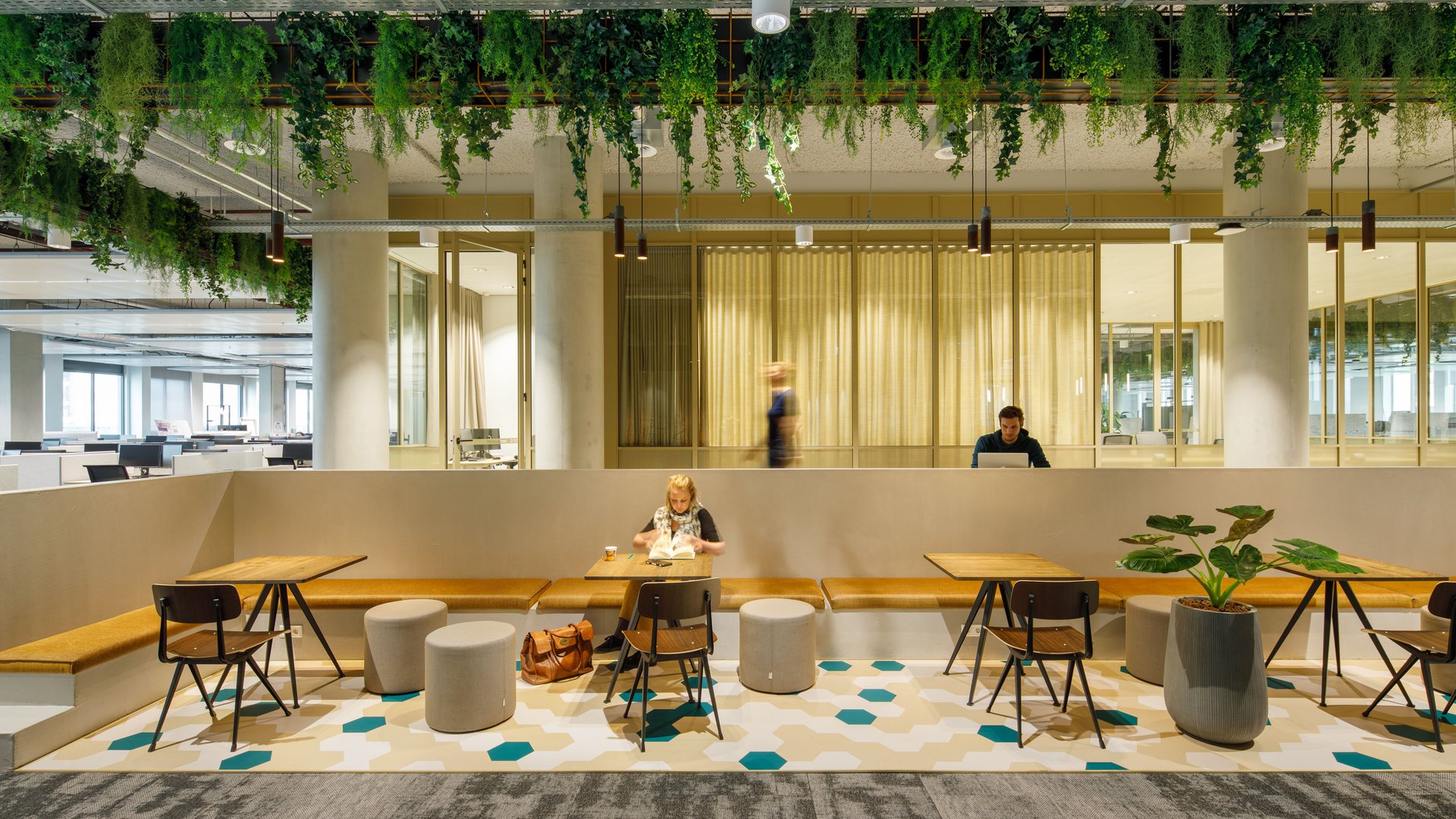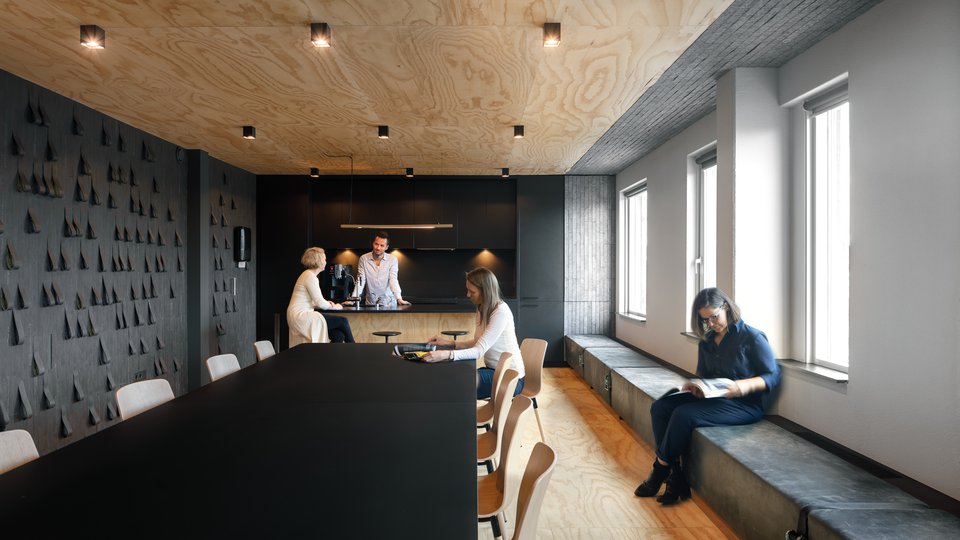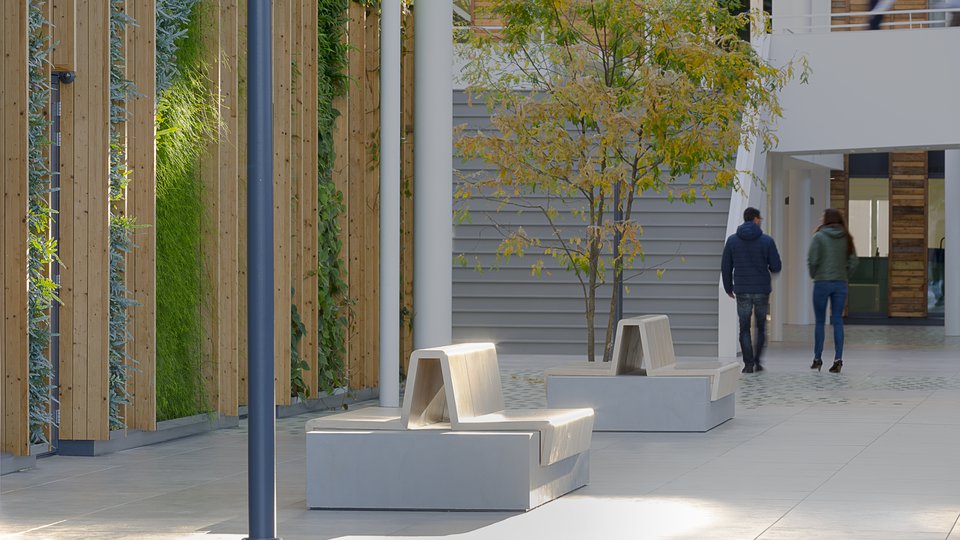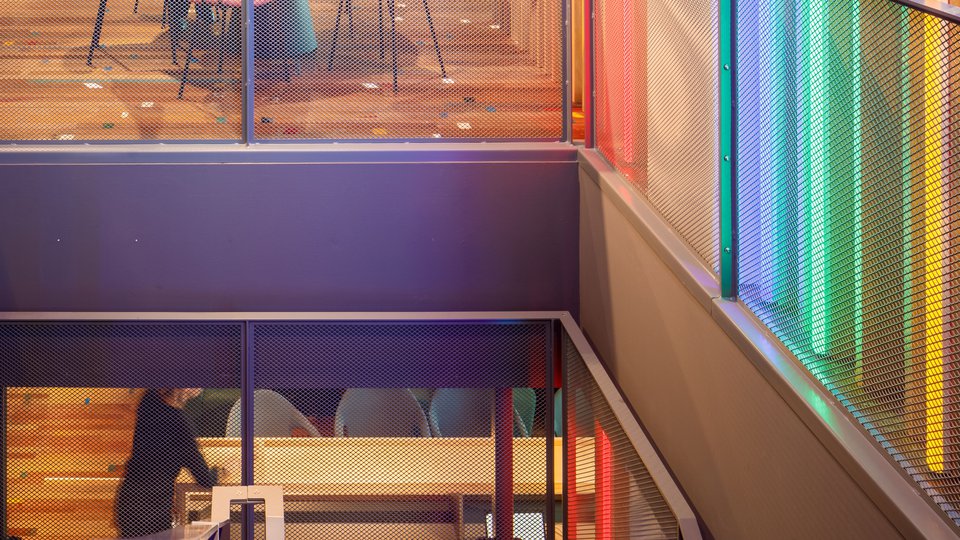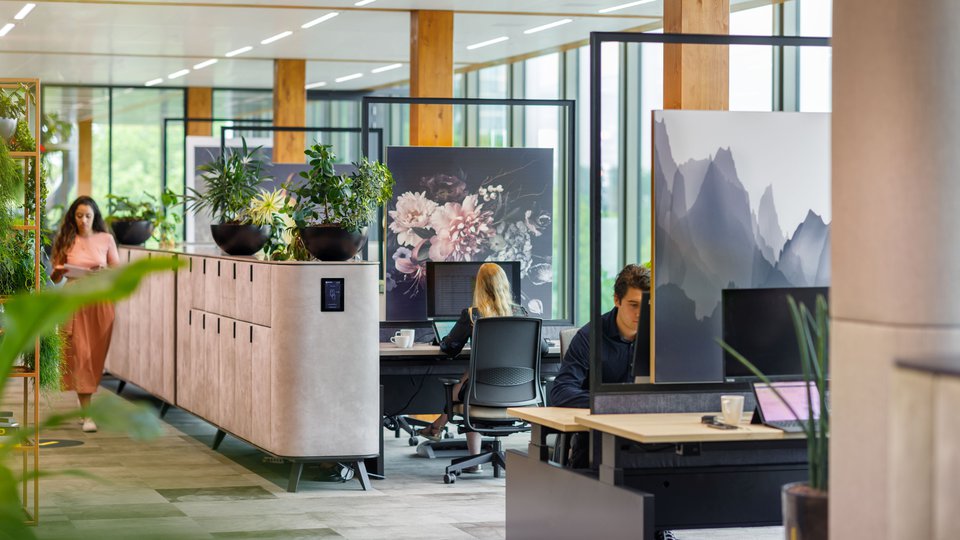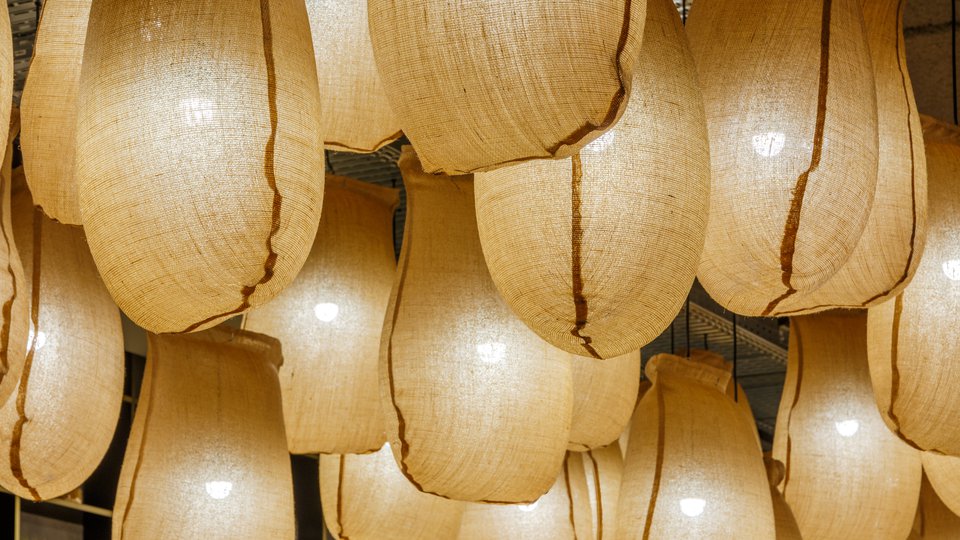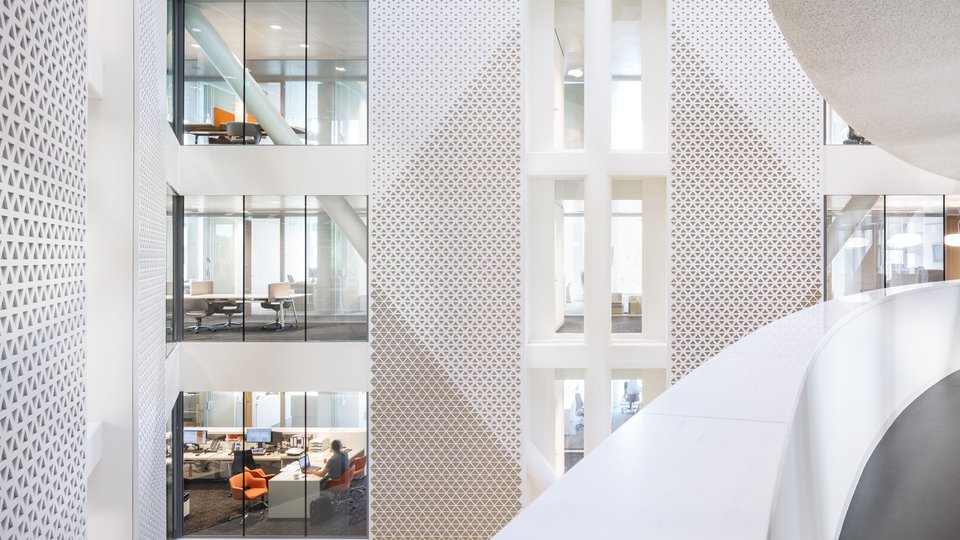Although our work field is broad, the projects have in common that there are multiple perspectives that need to be addressed. We look at the individual needs from a daily user perspective to the incidental visitor or customer. On a bigger scale, an organisation will have major requirements to take into account. When joining these perspectives our goal is clear: creating communities through meaningful spaces.
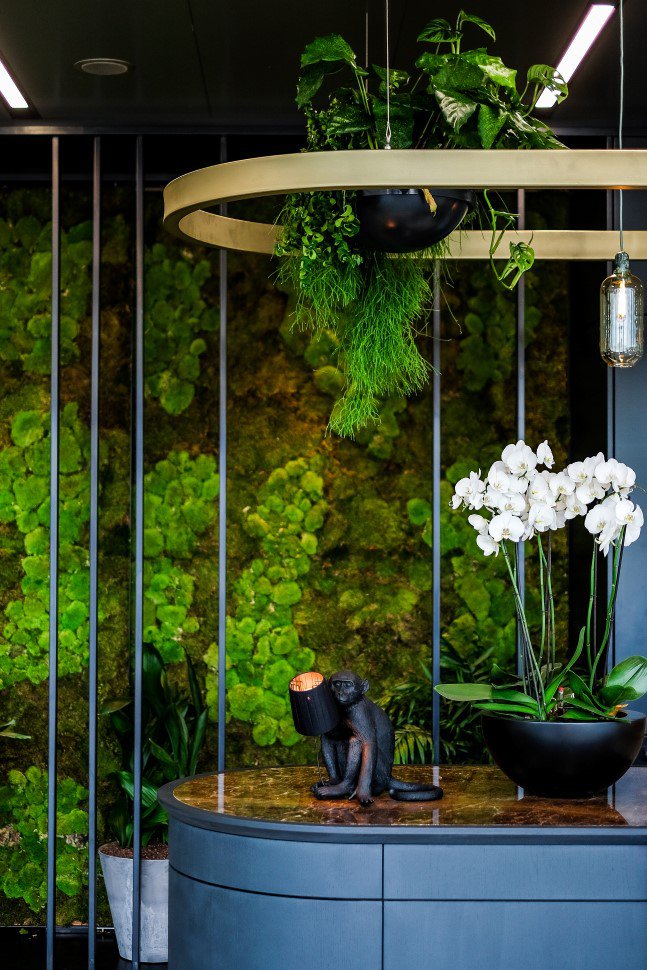
Well-being & sustainability
In the 29 years of our existence, Fokkema & Partners has been involved in numerous projects which have achieved the highest sustainability scores.
Sustainability however, has never been the starting point of our design process: that has always been the wellbeing of users. It is for them that we strive to design an environment that is not only beautiful but also healthy, not only functional but also simply a great place to be. A place that is there for the long run and deserves sustainable choices. We always design with a long-term mindset. Therefore, we prefer timeless quality over completely recyclable options when they only have short-term value. We see ourselves as a catalyst for positive change.
Our passion for innovation and pioneering ensures that we are always open to new concepts, products and materials. Combining innovation with a lasting work environment where people feel great, ensures a truly sustainable design. Sustainability may not be the starting point of our design process, but it definitely is its outcome.
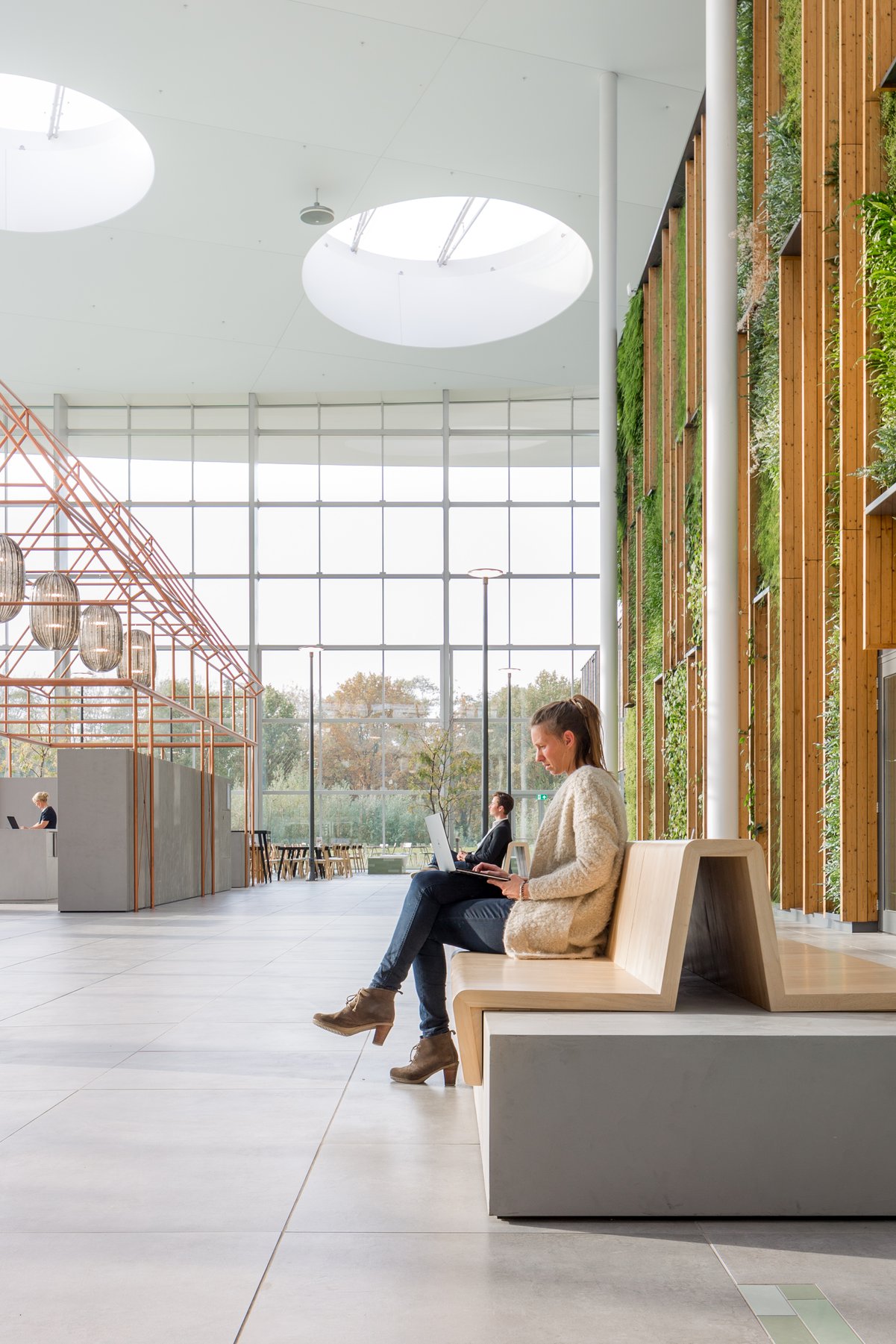
Design from the inside out
A design process often starts with the urban fabric or the context, the plasticity of the facade or sustainability. We design from a starting point that is fundamentally different. We start with the people and the organisation, whether public, private or a brand. We work from the inside out.
Although every organisation is different, the common denominator in our work is the way we implement strong spatial concepts. We are always aiming for a sequence of open spaces where people can connect and an organisation’s culture can thrive. Together these spaces counterbalance the hard restraints of the built environment.
The facade and building structure then is a natural outcome of the fluidity on the inside and the identity of its users. We believe in gradual transitions from inside to outside in which outdoor spaces, with room for nature, play a crucial role. They are moulded into a fluid spatial concept.
Mental space vs. physical space
Meaningful spaces are not only physical spaces but also mental spaces. Traditionally architects create physical spaces. Perfect executions of a complex program of requirements. Quantity and quality defined in advance. In reality a perfect world doesn’t exist. It’s the imperfection that often makes our world perfect. Spaces that are open for interpretations, where creativity flourishes, changes is possible and the unexpected can be experienced. We believe that a design needs both physical space and mental space.
And above all we need spaces that make a connection to a bigger story that everybody wants to be part of.
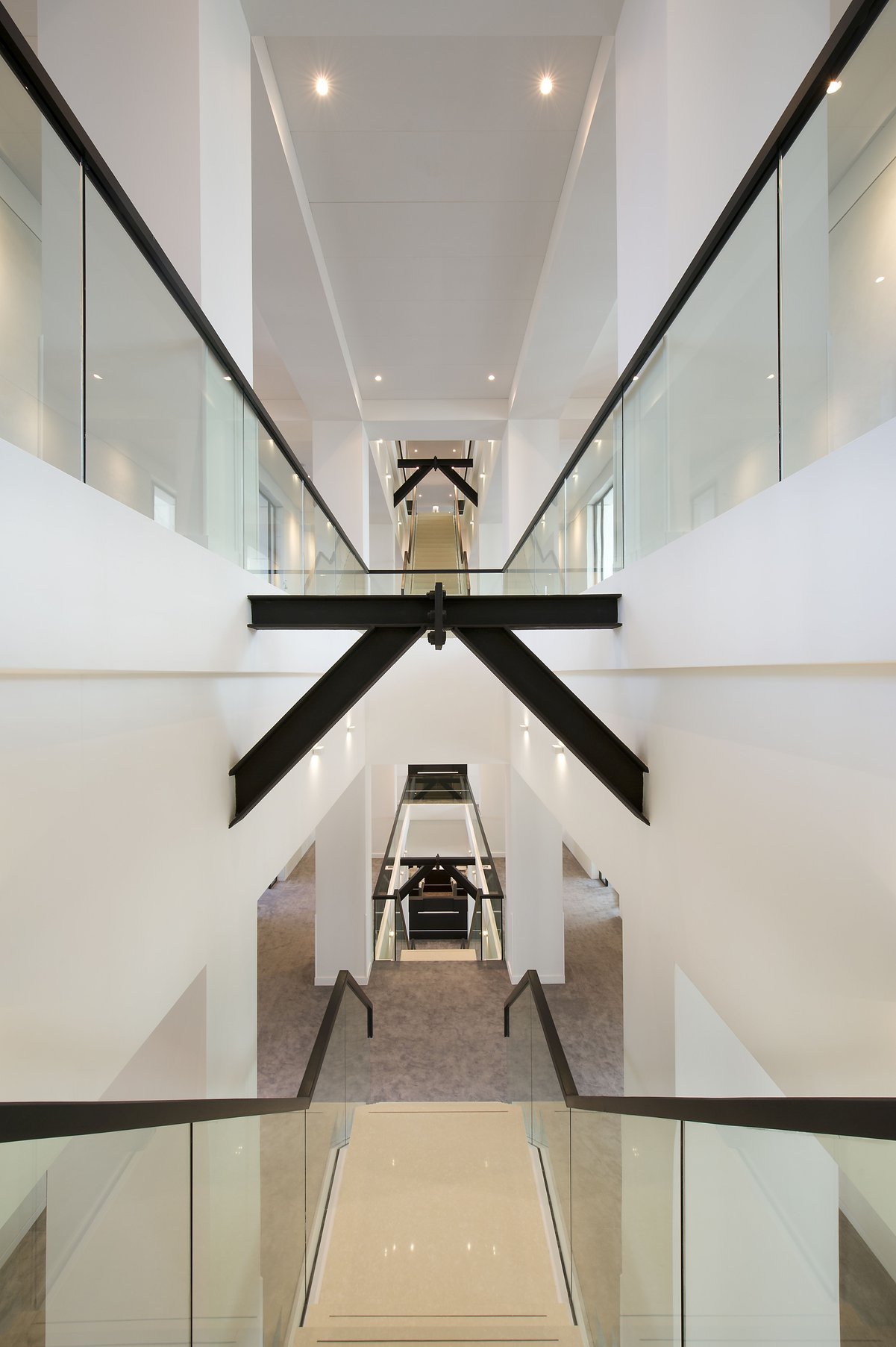
Sustainable renovations
Renovating buildings is an incredibly rewarding way to contribute to a sustainable environment. The design challenge is often formidable and requires a balancing act: respect for the original structure on the one hand, while on the other hand adding a new layer, making a building suitable for the next decades.
One must be able to recognize the strength and beauty of the original structure and see its potentials before one can add new elements in a meaningful way. It’s our goal to create a coherent ‘new’ building that contains both its own history and reaches out to the future. Our sustainable approach to existing buildings has revived outdated real estate, up to complete transformations that answer to the highest standards in terms of sustainable construction and exploitation. With focus on re-use and circular methodologies, Fokkema & Partners renovated over 300.000 m² in past decades.

Evidence-based design
In our pursuit to design high-performance offices we always build our concepts on our past experiences. Every project provides us with new data and insights. Smart building technology and extensive user research have taught us a lot. Ratio’s for desk sharing, lockers, phone booths, touchdowns and all other ingredients of new ways of working have been optimized and adjusted for various types of business.
Our designs are data-driven but not based on data alone. We believe that behavioural science is perhaps equally important. In the end, the social and psychological aspects will determine how we use our office environment. That’s why we continuously do research to help us better understand human nature. Lighting, sounds, colours, materials, shapes and spacing all have an influence on how we feel, behave and interact.

User engagement
Since the start of the firm in 1995, all projects have had one thing in common: a drive for quality that exceeds our clients’ expectations. It’s our ambition to get the most out of a design question on our clients’ behalf – a thorough process that starts with understanding client needs through carefully and methodically trying to come to the core of the matter.
We encourage our clients to come up with considerations and critical questions during the concept development phase. We feel that concept development really is one of the most important phases of the design process, a stage with a clear moment, when the true nature of the solution is determined. It is a phase when out of the box thinking, sharp analysis and down to earth practicality all come together in our effort to constantly raise the bar.
During the next phase of design development, we keep utilising our creative capacities to find solutions that stay away from the obvious but still remain practical. At the end of the day we like to be inspired and have fun, but most importantly we want our client to be proud of our common result.
